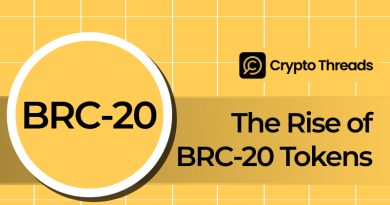What is a Layer 2 Network for Blockchains?
Understanding Scalability in the Blockchain World
Scalability in the cryptocurrency realm represents a critical aspect that determines how well a blockchain network performs under pressure. To understand this concept more clearly, let’s imagine a blockchain as a highway system. Scalability is essentially the highway’s ability to handle increasing traffic volume without creating bottlenecks or dramatically increasing travel costs.
When blockchain technology was first introduced through Bitcoin, the primary focus centered on creating a decentralized, secure, and transparent transaction system. However, as the ecosystem expanded and more users joined the network, the lack of scalability in these Layer 1 blockchains became increasingly evident. This limitation manifested as slower transaction speeds and significantly higher transaction fees, creating friction for everyday users. This is precisely where Layer 2 scaling solutions become invaluable tools for the blockchain ecosystem.
What is a Layer 2 Network?
A Layer 2 network represents an off-chain network or technology built on top of an existing Layer 1 blockchain foundation. To visualize this concept, imagine Layer 1 as the solid basement foundation of a building, while Layer 2 functions like additional floors constructed above that foundation.
Typically, a Layer 2 operates as a separate blockchain that extends the underlying Layer 1 blockchain while inheriting its robust security guarantees. This inheritance model ensures that Layer 2 solutions maintain the same level of trust and security as their foundational blockchain. Layer 2 protocols frequently operate using smart contracts deployed on their underlying blockchain, creating a seamless bridge between the two layers.
Why Layer 2 Networks Matter in Today’s Crypto Landscape
Layer 2 solutions play an absolutely pivotal role in the current cryptocurrency environment. Despite remarkable advancements in Layer 1 blockchains like Bitcoin and Ethereum, inherent scalability limitations continue to present significant challenges for widespread adoption.
Consider this problem using a popular restaurant analogy. When too many customers arrive simultaneously, waiting times increase dramatically and service quality may deteriorate. Layer 2 solutions, such as the Coinbase-backed Base network or the Bitcoin-based Lightning Network, enable the processing of low-value transactions on parallel blockchain networks. These transactions are subsequently transferred to the main blockchain for final settlement and permanent recording.
This approach effectively redirects the transactional burden onto parallel networks, thereby reducing congestion on the mainnet and solving the scalability bottleneck that continues to plague Layer 1 blockchains. The result is a more efficient system that can handle significantly more transactions without compromising security or decentralization.
Key Features and Benefits of Layer 2 Solutions
Layer 2 solutions deliver several transformative features and benefits that are reshaping how we interact with blockchain technology. These solutions are experiencing increasingly widespread adoption across a diverse range of decentralized applications, providing enhanced transaction speeds, substantially lower transaction fees, and ensuring the finality and immutability of transactions when they reach the mainnet.
By allowing the mainnet to concentrate on crucial foundational aspects such as decentralization, data availability, and security, Layer 2 solutions dramatically enhance the user experience. This division of labor makes blockchain technology more accessible and practical for everyday users, positioning Layer 2 solutions as instrumental tools in the growth and advancement of the entire cryptocurrency industry.
The benefits extend beyond mere technical improvements. Users experience faster confirmation times, often measured in seconds rather than minutes or hours. Transaction costs drop significantly, making micro-transactions and frequent trading economically viable. These improvements collectively lower the barrier to entry for new users while providing existing users with a smoother, more cost-effective experience.
Types of Layer 2 Solutions Explained
Multiple types of Layer 2 solutions exist in the current blockchain landscape, each featuring unique characteristics and approaches to solving scalability challenges. Understanding these different types helps us appreciate the diverse strategies being employed to scale blockchain technology.
Rollups represent one of the most promising types of Layer 2 solutions. These systems package multiple transactions into a single mainnet transaction, inheriting the security provided by the underlying blockchain like Ethereum. Think of rollups as efficient bundling services that compress many individual packages into one large shipment, reducing overall shipping costs while maintaining security. Rollups are further classified into Optimistic Rollups and zero-knowledge Rollups, each employing distinct methods for handling and validating transactions.
State Channels, also known as payment channels, enable rapid off-chain transactions between parties, with final settlement data recorded back to the mainnet later. Imagine this as a temporary ledger between two parties who conduct multiple transactions privately, only reporting their final balance to the “central bank” when they’re finished trading.
Other popular Layer 2 solutions include Sidechains, Plasma Chains, Nested Blockchains, and Validiums. Each type approaches the scaling challenge from a different angle, but all share the common goal of creating a more scalable, efficient, and cost-effective blockchain ecosystem. Sidechains operate as independent blockchains connected to the main chain, while Plasma Chains create hierarchical tree structures of smaller chains.
The Future of Layer 2 Technology
Layer 2 solutions are experiencing widespread adoption throughout today’s cryptocurrency landscape, and their importance is projected to increase significantly as blockchain technology continues evolving. These solutions are actively paving the way toward a more scalable, efficient, and cost-effective blockchain ecosystem that can support mainstream adoption.
The development of Layer 2 technology represents more than just a technical advancement; it embodies the blockchain community’s commitment to solving real-world usability challenges. As these solutions mature and become more sophisticated, they’re helping transform blockchain technology from an interesting experiment into a practical infrastructure that can support global financial systems, gaming platforms, social networks, and countless other applications that require fast, affordable, and secure transactions.



